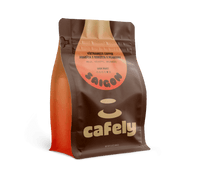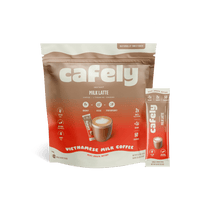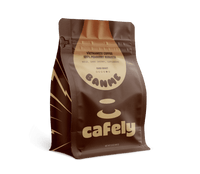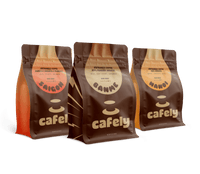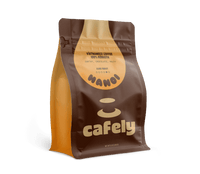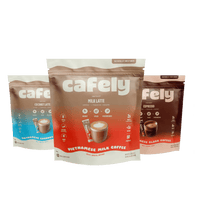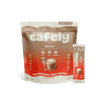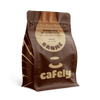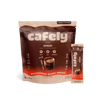You know that rare, almost magical state where hours fly by, distractions disappear, and you’re producing your best work without trying? That’s flow. This state that’s attributed to elite athletes or eccentric geniuses is actually available to you.
The real trick is learning how to flip that switch on demand. We’ll break down the science, the habits, and the mindset shifts that get you there.
What Is Flow State?
Flow is a rare mental zone where focus sharpens, distractions vanish, and you become fully immersed in what you’re doing.
Time bends — sometimes racing, sometimes slowing — and your sense of self fades into the background.
Work feels effortless, and the experience itself is deeply rewarding.
How It Works
Psychologist Mihaly Csikszentmihalyi coined the term to describe this peak performance, often reported by athletes, musicians, writers, coders, and gamers. Flow arises when conditions align: clear goals, the right balance of challenge and skill, and full engagement with the task. Entering this state leaves you more energized than when you began.
How to Trigger Flow on Demand

Flow is a state you can build towards with the right task, mindset, and a few smart tweaks to your environment. This section breaks down exactly how to prepare your mind and space, then how to stay in that zone once you’re in it.
Before You Start: Set the Right Foundation
If you’re half-scrolling through Instagram or jumping between ten open tabs, you won’t stumble your way into the flow state. It starts before you sit down to work, in how you plan, what you prioritize, and the space you create for deep work.
- Pick a task that’s slightly challenging but not overwhelming — You need just enough friction to stay engaged. Too easy, and your mind drifts. Too hard, and you start to get frustrated.
- Eliminate all distractions — Shut the door to your office, put your phone on do-not-disturb mode, and block distracting websites. If you’re working in a semi-public place or at the office, try noise-canceling headphones and some distraction-free music.
- Have a clear, measurable goal — Vague intentions like “be productive” won’t cut it. Try “write 500 words” or “solve this coding bug.”
- Use a time block — Aim for a 60 to 90 minute work window where you can deep dive without other obligations tugging at you. Set a timer or put on an album that lasts the amount of time you’d like to work.
- Create a dedicated environment or flow ritual — Create a ritual you like, such as brewing a cup of coffee or tea, putting on the noise-canceling headphones, or starting with a five-minute meditation. Whatever you do to begin your flow ritual, consistency is more important than the specifics.
While Working: Stay in the Zone
Once you’re in the flow, staying there takes a bit of work. You’ll need to protect that mental groove from energy dips, attention leaks, and your impulse to multitask.
Here are some strategies you can use to help stay in the zone:
- Use the Pomodoro method or deep work sprints — The Pomodoro technique is a great way to get started and stay in the zone. The concept is simple — 25 minutes on, 5 minutes off. You can extend the work stretches longer if you’re fully locked in. Just make sure you’re intentional about when you pause. You can find tools like the “Pomodoro timer” online to get you started.
- Listen to flow-enhancing music or ambient noise — Lyrics can be distracting. Try instrumental soundtracks, jazz music, or nature loops to keep your brain humming.
- Focus on the process, not the outcome — Flow happens in the doing, not in worrying about results. Lose yourself in the steps instead of thinking about all the other things you need to do.
- Monitor energy levels and take strategic breaks — Don’t wait until you're crashing to take a break. Step away before the dip, move your body, and drink water. You’ll be able to return stronger if you listen to your body and take breaks at the right time.
- Use breathwork or mindfulness to reset if you lose focus — A 60-second pause to breathe deeply or recenter can stop spiraling thoughts before they unravel your focus entirely.
Benefits of Entering the Flow State
With the right conditions, flow can transform the way you work, think, and feel. What seems like a productivity hack on the surface is — in reality — a deep neurological shift that reshapes your experience of effort, time, and reward.
Productivity compounds. When you’re in flow, you move through complex tasks faster and with fewer mistakes. There’s less mental drag, less second-guessing, and way less time wasted jumping between tabs or rewriting the same sentence five times.
New ideas connect more easily as your creativity sharpens. Writing, designing, or troubleshooting? Flow lets you pull from different corners of your brain and combine them in unexpected ways. Solutions show up that you might have missed in a more distracted headspace.
When you’re fully absorbed, anxiety fades away, and stress takes a backseat to productivity and in-the-moment presence. That sense of deep focus and progress is also emotionally rewarding. You’ll finish the task feeling lighter and more fulfilled.
Finally, there’s internal motivation. Flow feeds your desire to return to work for its own sake. Instead of external motivations like deadlines or the dopamine hit from checking something off your to-do list, you’ll be motivated by being in the state.
What to Avoid if You Want to Enter Flow
Even with the perfect task and a block of quiet time, a few common habits can knock you right out of that groove before you get started.
Here are some things you should avoid to start and stay in the flow state:
- Multitasking or task switching — Switching between tasks, even briefly, resets your brain’s attention. That peak at your email notification fractures your focus and burns valuable cognitive energy each time you return to your main work.
- Over-checking email, phone, or social media — Reaching for your phone for a second, glancing at a new notification, or refreshing your inbox breaks your concentration far more than it seems. Flow demands uninterrupted momentum, so checking in constantly is like pulling the emergency brake every five minutes.
- Environment plays a bigger role than you realize — A cluttered desk, background noise, or uncomfortable lighting can create micro-distractions that chip away at focus. Your surroundings should help you lock in instead of giving your brain more to process.
- Low energy or fatigue — If you’re running on caffeine fumes and barely slept the night before, or you skipped breakfast to get an early start on work, your brain doesn’t have the fuel to lock in.
- Undefined goals or unclear priorities — Without a clear direction, your brain doesn’t know what to lock onto. If your goals are undefined or your to-do list is just a vague cloud of “stuff to get done,” it’s nearly impossible to reach the mental clarity that flow depends on.
Common Flow State Trigger Models and How They Work
Researchers have spent years trying to reverse-engineer flow, developing key models to explain what flow is and how to consistently trigger it. These frameworks give us a more precise understanding of what brings the brain into that focused, high-performance zone.
1. Steven Kotler’s Flow Triggers Model
Best known for his work with athletes, creatives, and high-performers, Steven Kotler mapped out a set of flow “triggers” — conditions that make entering flow more likely. They’re split into psychological, environmental, and social triggers.
Psychological triggers tap into how the brain responds to stimuli and challenges.
Here are the positive triggers that help you get into the flow state:
- Novelty — New environments, ideas, or problems demand your full attention.
- Complexity — Intricate tasks force the brain to concentrate and make connections.
- Unpredictability — Surprises activate the brain’s alertness system and keep you engaged.
- Risk — Emotional, physical, or creative risks boost adrenaline and dopamine, hormones that prime you for deep focus.
- Clear Goals— Without a target, the brain drifts. A defined outcome gives you direction.
- Immediate feedback— When you know instantly what’s working, you can adapt in real time.
Environmental and social triggers play a quieter but equally powerful role in flow states:
- Deep embodiment — Full-body engagement, like sports or labor, anchors your attention.
- Rich environments— Stimulating spaces with novelty and sensory depth help hold your focus.
- Shared goals— In team settings, aligned purpose and mutual challenge can create a group flow where everyone locks in together.
2. Mihaly Csikszentmihalyi’s Flow Model
Before Kotler was mapping out his flow labs, psychologist Mihaly Csikszentmihalyi laid the groundwork. In his landmark book Flow: The Psychology of Optimal Experience, he outlined what he called the “flow state” and identified its key features, many of which remain central today.
Here are the core conditions his research uncovered:
- A balance between challenge and skill.
- Clear goals that give purpose to the activity.
- Immediate feedback to guide progress.
- Focused attention on the task at hand.
- Loss of self-consciousness, as ego and doubt fall away to productivity.
- An altered sense of time, where hours may feel like minutes.
- An autotelic experience, meaning the activity feels meaningful and rewarding on its own.
One of Csikszentmihalyi’s most important contributions is the Flow Channel Graph. This shows how your experience shifts depending on how much challenge you’re facing versus how much skill you bring.
Here are the summarized notes:
- Too little challenge = boredom
- Too much challenge = anxiety
- Just right = flow
It’s a deceptively simple visual, but one that explains a lot about why we get stuck or distracted and how to shift conditions to get back into the zone.
3. Cal Newport’s Model: The 5 Dimensions of Deep Work
While Cal Newport doesn’t frame his work in terms of “flow” explicitly, his concept of deep work — the ability to focus without distraction on cognitively demanding tasks — shares plenty of overlap. In fact, many of the habits he advocates for are practical tools for entering flow more reliably.
These five dimensions form the backbone of his deep work philosophy, and each one supports conditions already recognized in flow research:
- Distraction-free environment — This is a non-negotiable for Newport. You can’t expect sustained focus in the middle of digital chaos or constant interruptions.
- High cognitive demand tasks— Like flow, deep work thrives when your brain is stretched by something meaningful and mentally rich.
- Time-blocked work— Scheduling focused blocks trains your mind to expect deep engagement during specific windows. It also strengthens that habit over time.
- Ritualized start/stop times— From pre-work meditation to simply sitting in the same chair at the same hour, rituals signal your brain that it’s time to go deep.
- Clear goals and tracking progress — Flow needs feedback, and Newport’s model echoes that through visual tracking systems (like tally marks or word counts) that show how far you’ve come.
Flow State Model Comparison Table

Though each of these approaches flows from a different angle (neuroscience, psychology, or productivity), they all converge on a similar truth — deep focus isn’t accidental. The table below highlights how their models compare, the triggers they emphasize, and where their ideas are most useful in real-life applications.
Mindset Matters: Growth Mindset and Susceptibility
Even with the right tools and timing, flow can stay out of reach — often because of mindset.
A growth mindset (coined by psychologist Carol Dweck) sees the ability as something that can be developed. Challenges aren’t threats — they’re opportunities. This openness fuels flow by keeping you engaged when things get tough.
A fixed mindset, on the other hand, treats struggle as failure. If you believe you're either good or not, difficulty triggers self-doubt — and shuts down the focus flow needs.
Flow also requires self-trust. You have to let go of micromanagement and lean into instinct. The more willing you are to mess up and learn, the easier it is to drop into that immersive, high-performance state.
Flow thrives where curiosity beats perfectionism.
FAQs About Flow State
Still have questions about the flow state? This section clears up common confusion and debunks myths to help bring flow into your daily routine.
1. How Long Does It Take To Get Into Flow?
It usually takes 15 to 30 minutes of uninterrupted focus to drop into flow. However, the time depends on your environment, energy levels, and how mentally engaged you are in the task at hand.
2. Can Anyone Learn To Enter Flow, or Is It Natural?
Flow is a learnable skill. While some people may naturally slip into it more often, anyone can build the right habits, mindset, and environment to make it happen more reliably over time.
3. Is Flow the Same as “Deep Work”?
Not exactly. Deep work is a method, and flow is a state of mind. Deep work creates the conditions for flow, but not every deep work session leads to that immersive, time-warping experience.
4. Can Flow Help with Burnout or Mental Fatigue?
Indirectly, yes. Flow can reduce stress and make you feel more fulfilled, which may buffer against burnout. But if you’re already running on empty, your brain may need a rest before it can reach flow again.
5. How Does Meditation or Mindfulness Affect Flow?

Both help train your focus and reduce internal distractions, two key ingredients for flow. Regular mindfulness practice makes it easier to stay present and shift into flow when conditions are right.
6. Is Flow Only for Creative People or Athletes?
No, flow shows up in nearly any activity — coding, teaching, cooking, organizing spreadsheets — as long as the challenge level and your skill are well-matched.
7. Can Music Help Trigger Flow State?
Yes, but choose the music wisely. Instrumental or ambient music works best — lyrics can disrupt focus. Binaural beats and lo-fi soundtracks are popular because they fade into the background while keeping the mind engaged.
8. What’s the Best Time of Day To Enter Flow?
Late morning or early afternoon is ideal for many people when alertness is high, but stress is still low. However, your personal rhythm mattress most. Track when your focus naturally peaks to decide on the best time for you.
9. How Do I Get Back Into Flow After Losing Focus?
Step away briefly. A short walk, breathwork, or quick reset ritual can help clear the mental clutter. Then, return with intention, ideally to a clear next step, not an open-ended mess.
10. Are There Apps or Tools That Help With Flow State?
Yes, tools like Freedom to block distractions, Brain.fm for music, Notion or Todoist for clear goals, and websites like Pomodoro timer (pomofocus.io) all support flow-friendly routines.
